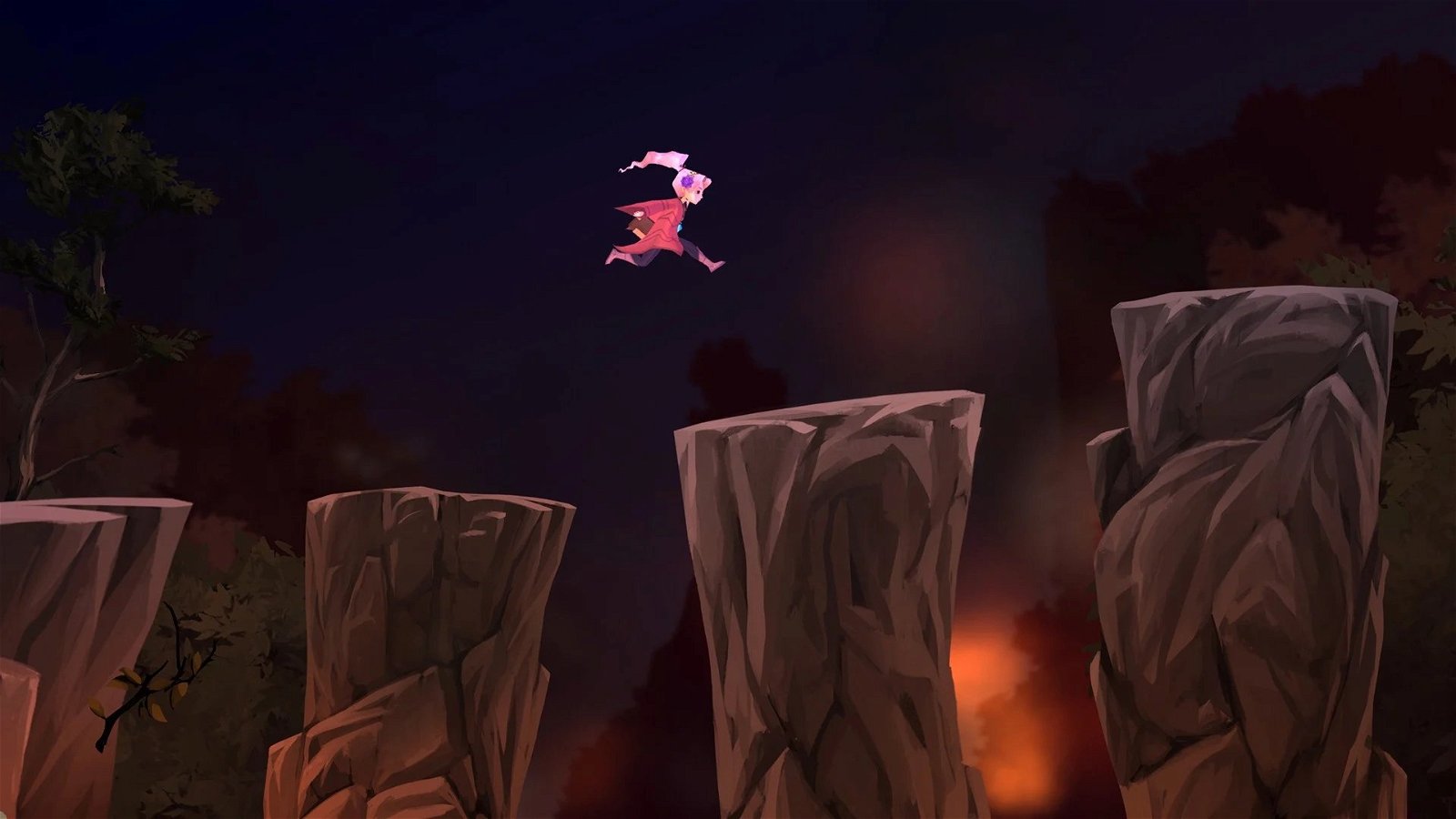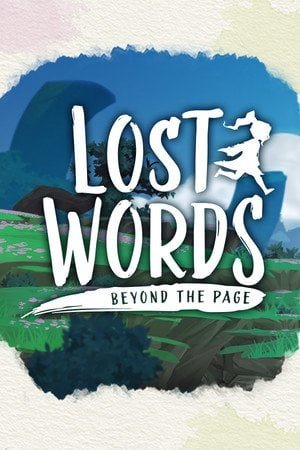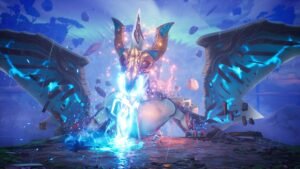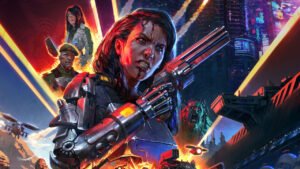Lost Words: Beyond the Page makes a strong case for the argument that video games can be considered art.
This novel adventure from Sketchbook Games consists of eight levels, with two distinct phases (plus an epilogue). In the first phase Izzy, the protagonist, reads her journal aloud as she writes and draws in it, detailing her adolescent life and her relationships with her family. The player moves a representation of her around the journal pages, using her words as platforms and manipulating her drawings to get to the next page.
As Izzy speaks, more word-platforms appear, or the environment may change to suit her mood or topic. At one point, she tells the tale of watching Star Wars with her grandmother, and the player must navigate scrolling text reminiscent of its famous opening crawl. In another instance, Izzy is discussing memories, and sketches Polaroid picture frames; to progress, the player has to use R2 to pick up the word “remember” from the text and drag it around with a cursor to draw scenes into the frames.
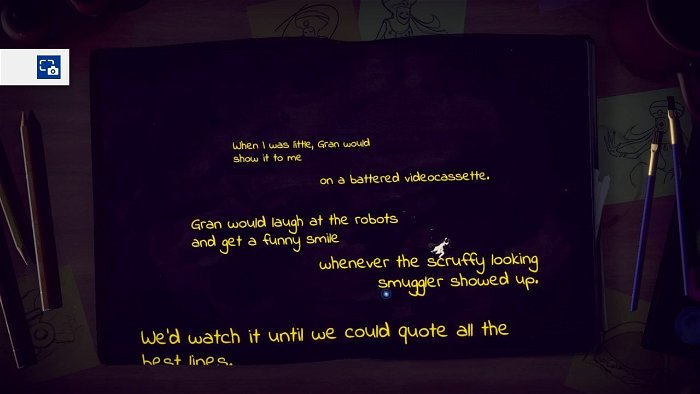
Izzy is also an aspiring writer, and her daily life segues into the next chapter of a fairy tale she is writing. The real-world segments inform the fantasy world in many ways, like how the village elder resembles her grandmother. At the end of each journal phase, Izzy provides some prompts, allowing the player to subtly shape the story. Decisions impact everything from the name and appearance of her heroine, to the motivations of characters, or the way the heroine will react.
Gameplay shifts inside the story for the second phase, where Izzy narrates and the player navigates her created world, Estoria. The heroine gains a magic spellbook that stores up to a half dozen different words which can be used to interact with puzzles and obstacles. To progress through a forest, Izzy’s heroine may need to use the word “break” to topple a tree and make a bridge, or use “swap” to trade places with an ally. Like the journal phase, words are dragged around with R2 and the right stick, which moves a “firefly” cursor around the screen.

That’s the jist of the gameplay through all eight stages: listen to Izzy while traversing the journal and the storybook, performing simple platforming challenges and manipulating simple puzzles. But these gameplay elements are not the true focus of this title.
Right from the “press start” screen, the entire experience is beautifully stylized and packed with visual cues—from the cute watercolor doodles in Izzy’s journal, to the various elements and hints scattered on her desk in each stage, and the way objects may appear in both the real and fantasy worlds. Collectible asterisks in the journal further expand her inner monologue, and sometimes the objects she doodles can be interacted with in optional ways—sometimes with a hidden trophy as a reward.
Izzy’s narration is compelling and entertaining, delivering a beautiful script penned by Rhianna Pratchett—who previously worked on the Tomb Raider reboot and Mirror’s Edge. This story—about a young girl facing the loss of a loved one— is the heart of Lost Pages. Izzy rides a roller coaster of emotion from the happiness of a birthday party, to the fear of losing someone dear, to recovering from heartbreak.
In this way, Lost Pages is more of an experience than a platformer or puzzler. The gameplay elements may be light and unchallenging, but they are used in captivating ways to reflect Izzy’s emotional state. If the player grabs black asterisks instead of the usual watercolour variety, her thoughts may grow sadder. Word platforms fall out beneath you when she feels distraught or rise like elevators when she is thoughtful.

Through it all, the presentation is sublime. Exemplary voice acting, a beautiful score, insightful writing, and rich visuals—Sketchbook Games uses every aspect of the game engine and its aesthetics to express her emotions and pull at our heartstrings. It’s a masterclass in how a game’s mechanics can be used to enhance its story. From the raw power of the words and narration to the way Izzy’s imaginary world is influenced by her grief, this is a potential tear-jerker. I can admit that it even had me tearing up, and I’m not one to cry at games or books—and it may be a little too sad for some younger players, depending on their own experiences and emotional maturity.
One playthrough takes about 4 and a half hours, and the appeal may run out after that, unless one desires to drink in the whole tale again and look for new details. Despite being a somewhat linear narrative there is some small replay value. There are a variety of choices to be made to influence the story, and collectible fireflies to find in the storybook world. As the credits rolled, I was already planning what I could do differently on another run through of Lost Words: Beyond the Page.
